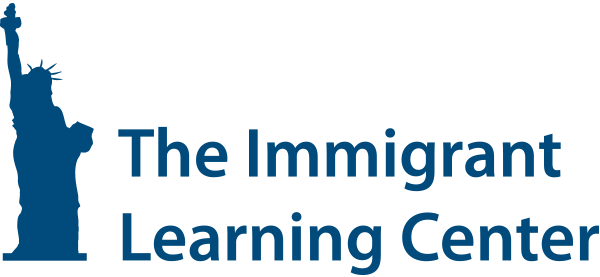On-Demand Virtual Training
School districts across the country are welcoming a growing number of newcomer students, and educators are being asked to adapt whether or not this is a new trend for their community.
During this training session, immigration experts and educators provided an overview of the current immigration landscape and offered practical tools and strategies to foster a sense of belonging for immigrant students and their families.
Learning Objectives:
- Learn about current immigration trends
- Explore the positive contributions immigrant students bring to schools and communities
- Gain strategies for fostering belonging, identity and agency in immigrant and ELL students

Modules
The Impact of Misinformation and Bullying on Immigrant Students
Meisha Lamb-Bell, Program Director, Re-Imagining Migration
Key Concepts:
- The current culture (in and out of schools) challenges immigrant students’ sense of belonging
- A culture of inclusivity benefits immigrant students and supports the entire school community.
- Media literacy helps students critically analyze immigration-related misinformation and its impact on public perception and behaviors.
Check out these resources:
- Recent Immigrant Children: A Profile of New Arrivals to U.S. Schools (Migration Policy Institute)
- The Power of Words: Recognizing and Responding to Anti-Immigrant Stereotypes
(Re-Imagining Migration) free login required - Survey: Immigrant students feel invisible to teachers and peers
(Public News Service)
How To Use Stories From the Past, Present and Personal to Support Immigrant Students
Jessica Lander, Teacher and Author
2023 Massachusetts History Teacher of the Year
Key Concepts:
- In order to reimagine immigrant education, we need to understand the past, present and personal experiences of immigrant students .
- Including the immigrant perspective in relevant subject areas can help to shift the conversation from “us vs them” to shared experiences.
- Look to history for examples of individuals and communities fighting back against bullying and xenophobic policies.
- Hear three immigrant education stories from different time periods and locations in the United States.
- Incorporate high standards, joy and relationship-building into all classes.
- You can encourage students to share their family migration stories through writing, art or oral history projects.
Check out these resources:
- Teaching U.S. Immigration series (The Immigrant Learning Center)
- The Tasting History Project (Lowell, MA, High School)
- We Are America Project
- Making Americans by Jessica Lander
- Jessica Lander’s resource list
Suggestions for Teachers on Promoting Immigrant Student Belonging
Meisha Lamb-Bell, Program Director, Re-Imagining Migration
Key Concepts:
- Schools and teachers should strengthen relationships, review policies about harassment and bullying, and conduct student pulse checks to gauge students’ sense of community at school.
- Build relationships with community members to uplift diversity.
Check out these resources:
- Re-Imagining Migration Framework
- Re-Imagining Migration’s Rumor Review App, free login required
- Teaching About Anti-Immigrant Stereotypes: A Tip Sheet for Educators (Share My Lesson)
- Our Threads, a question card game that supports students (ithrive Games)
Crowdsourced Strategies for Real-Life Situations
Read strategies and suggestions by teachers to address three common scenarios: suspected bullying, language barriers and underrepresentation of immigrant students in leadership roles. Add your ideas to the Padlet!
Panel Discussion
Meisha Lamb-Bell, Program Director, Re-Imagining Migration
Adam Strom, Executive Director, Re-Imagining Migration
Jessica Lander, Teacher and Author
Dr. Graziella Pagliarulo McCarron, Associate Professor of Leadership Studies, George Mason University School of Integrative Studies
Key Concepts:
- Xenophobic bullying is reaching epidemic levels.
- Evaluate your current bullying policies and response protocols to make sure your school explicitly prohibits anti-immigrant bullying.
- Encourage bystander intervention and norm-setting.
- Train school staff to address bullying from both students and educators
- Broaden historical perspectives by incorporating diverse histories, such as Angel Island alongside Ellis Island.
- Educators can play a central role in fostering allyship and support.
- Review your school’s intake processes for new students to ensure they are welcoming and responsive to immigrant students’ needs.
- Conduct a community audit to assess current support structures for immigrant students.
- Partner with local community groups and organizations that offer resources and support for immigrant students and their families.
- Intersecting identities create complexity and opportunity
- Encourage students to envision their possible futures through journaling, art and storytelling.
- Help students recognize and embrace the strength that comes from their multiple identities and lived experiences.
Check out these resources:
- Fostering Belonging: A Guide for addressing bullying against immigrant students (Re-Imagining Migration)
- Our Moving Stories Docuseries (Immigration Initiative at Harvard)
- Angel Island Immigration Station Foundation Curriculum Guides
- Community Belonging Audit (Re-Imagining Migration) free login required
- Collection of Diversity and Culturally Responsive Teaching resources (The Immigrant Learning Center’s Teacher Resource Hub)
Please note: The views expressed by guest presenters are their own and do not necessarily reflect the views of The Immigrant Learning Center.
